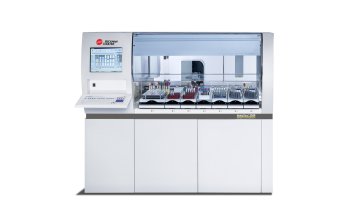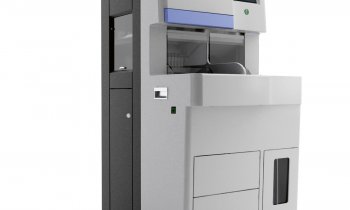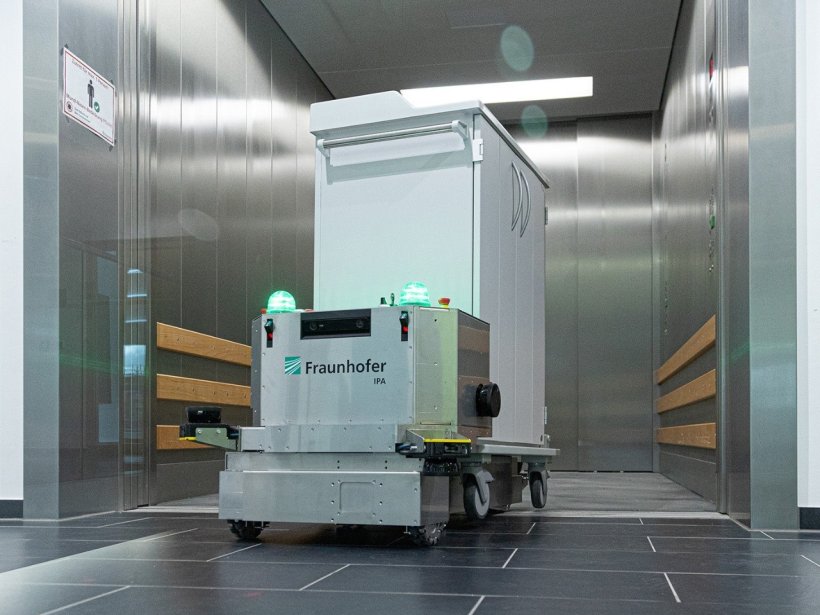
© Fraunhofer IPA
Article • More quality time for patients
Transport robots help care staff
Surveys and studies regularly arrive at the same conclusion: care staff, particularly in hospitals, want more time to spend with the patients. Persistent staff shortages, however, continue to increase the staff’s workload and thus render this wish well-nigh impossible. But there might be help around the corner: the Fraunhofer Institute for Manufacturing Engineering and Automation IPA developed a flexible transport robot to support care staff in hospitals.
Article: Sonja Buske
Being a hospital nurse entails considerable footwork: moving between patient rooms, departments, the lab and different storage rooms, nurses can chalk up several kilometers during a single shift. The time spent in the hallways means less time for bedside patient care. Engineer Dr. Birgit Graf and her team at Fraunhofer IPA addressed this issue in their MobDi project by developing a transport robot that can lift any cart with sufficient ground clearance and take it to the desired location – be it laundry or meal carts, garbage or beverage carts. 'Length and width of the robot chassis can be adjusted according to the size and wheel base of the cart to be transported,' Graf explains. 'The transport robot can move in any direction and is thus suitable even for confined spaces. A 360° safety system with sensors makes sure that the robot does not present a danger to people.' Moreover, the system can be preprogrammed to execute certain tasks at certain times or be used spontaneously as required.
Robot, fetch!
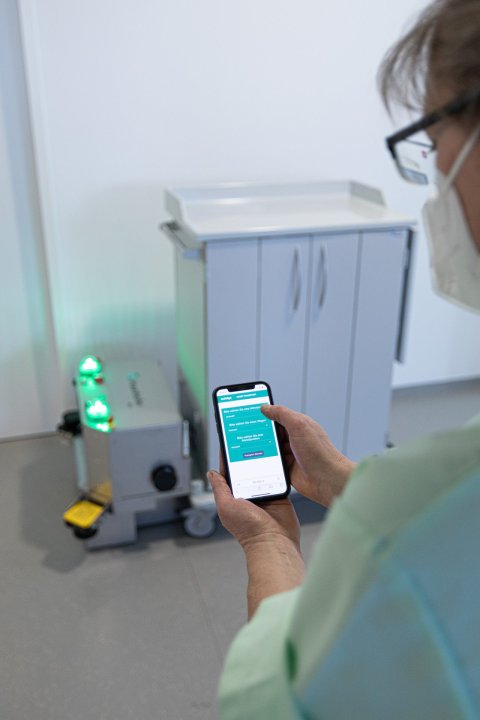
© Fraunhofer IPA
A possible scenario could be as follows: at the beginning of a shift the robot places the required number of carts – let’s say with bed linen or care utensils – to predefined locations. When that cart's stock runs out during the shift, the nurses can order replacements on their mobile phone. The robot then brings the restocked cart to the room where it is needed. At the end of the shift the robot takes all carts back to the storage room. Thus the nurses can stay with the patients while new material is being fetched; due to its mobility, the robot can support several team members.
While the robot takes over the transport, restocking the carts still needs to be done manually by human colleagues. But Dr Graf’s team found a way to solve this problem: modular baskets at an automated changing station. Graf explains that 'each modular basket contains the items necessary for a certain task, for example taking blood samples or changing wound dressing. When all items in the basket are used up, the robot automatically moves to the changing station and replaces the baskets – without human intervention.'
Cart with sensors
Sensors for stock management are particularly helpful. 'Each item taken from the stock is scanned. When the available stock has reached a certain level and needs to be replenished, a message is sent to the staff,' says Graf. 'Since the system is linked to the facility‘s material management system, an order can be placed immediately.' Each cart can be equipped with this technology but it is particularly simple to implement with patient care carts featuring a screen that provides access to the documentation system.
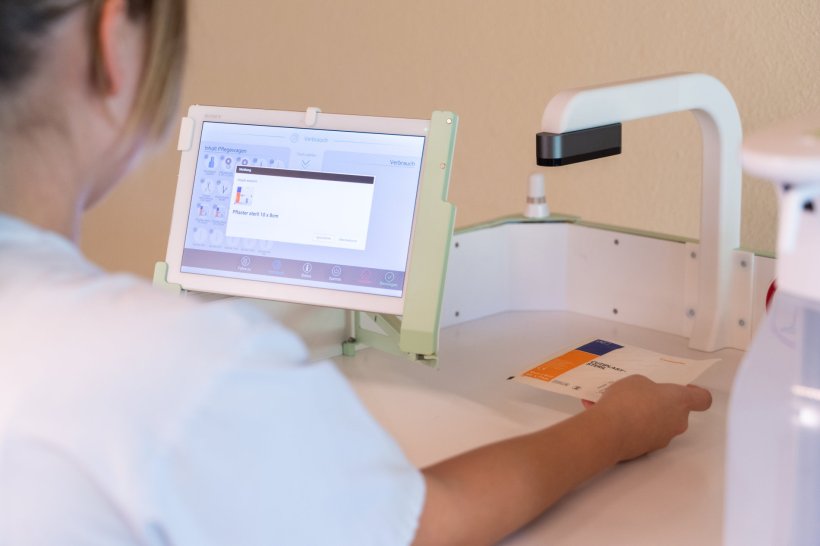
© Fraunhofer IPA
The prototype of the transport robot has been extensively tested in the Fraunhofer labs. 'Now would be a good point in time for an industry partner to come on board,' Graf points out, since a market-ready robot could be developed rather quickly. The economic benefits have already been verified in a sample calculation. 'In a 100-bed facility, a robot that takes on the entire transport of fresh and soiled laundry has paid off within three years. If it takes on more tasks, that period is even shorter.'
Profile:
Dr. Birgit Graf is an engineer and heads the team “Residential and Assistive Robotics” at Fraunhofer IPA. She has been working in the field of service robotics for over 20 years and was involved in the development of different generations of the robot assistant Care-O-bot and several other systems to support the care staff in nursing homes and hospitals.
01.06.2023










